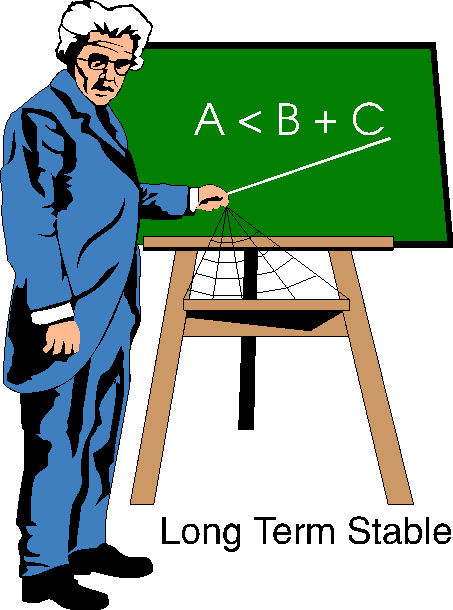The eight queens problem - position eight queens on a chess
board so they do not attack each other. The rules of chess don't change from day to day,
so a technique can be devised which may be elegant and efficient, but does not need to be
flexible.
The aircraft departure problem - devise a best sequence for
departure of the planes ready for takeoff. The constraints among planes and on the runway
are continually changing, so a dynamic technique is required. A solution which takes
longer than about 10-15 seconds on each cycle is not a solution at all to the real
problem.
 These
two problems are at extremes - the relevant rules of chess haven't changed in a thousand
years, while a new aircraft might appear on the runway every minute.
These
two problems are at extremes - the relevant rules of chess haven't changed in a thousand
years, while a new aircraft might appear on the runway every minute.
Most industrial and asset allocation problems are much closer to the dynamic end than
the static end, the existence of the organisation - whether airport or communications
company - is in response to the long term need, what remains is the short term efficient
use of its assets, and the planning for future expansion of those assets.
 Some problem areas are relatively static and unchanging, some are volatile and dynamic.
The approaches and tools used for solutions in the two areas are quite different. A static
problem suits a strongly mathematical approach, where the structure is assumed constant,
and various techniques - linear programming, specialised algorithms - may be used to find
solutions. Most problems in industry are not of this long term stable type - either there
is too much potential for structural change, or there is a continual daily flux of minor
changes, making a static approach unsuitable for problems with a large short term varying
component.
Some problem areas are relatively static and unchanging, some are volatile and dynamic.
The approaches and tools used for solutions in the two areas are quite different. A static
problem suits a strongly mathematical approach, where the structure is assumed constant,
and various techniques - linear programming, specialised algorithms - may be used to find
solutions. Most problems in industry are not of this long term stable type - either there
is too much potential for structural change, or there is a continual daily flux of minor
changes, making a static approach unsuitable for problems with a large short term varying
component. These
two problems are at extremes - the relevant rules of chess haven't changed in a thousand
years, while a new aircraft might appear on the runway every minute.
These
two problems are at extremes - the relevant rules of chess haven't changed in a thousand
years, while a new aircraft might appear on the runway every minute.  An analysis of a problem, which is then locked away in the combination of a data structure
of an algorithm, is particularly bad when the topology of the problem can change, a new
constraint being found from one aspect to another. This renders the algorithmic structure
obsolete and, where an algorithm might take six months to devise, slows down the response
of the real process to changes in the operating environment.
An analysis of a problem, which is then locked away in the combination of a data structure
of an algorithm, is particularly bad when the topology of the problem can change, a new
constraint being found from one aspect to another. This renders the algorithmic structure
obsolete and, where an algorithm might take six months to devise, slows down the response
of the real process to changes in the operating environment.